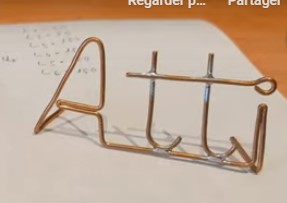Welcome everyone!
We have a circuit with an on and off power source.
Now imagine a black box with a structure that provides infinite energy.
So we only have one source of energy coming out.
Can this exist?
The question is what might be in the black box.
Self-feeding structure.
What could this structure be? Can such a structure exist? How can you produce energy? What is energy? What is the mechanism that works continuously (or until exhaustion)? Is it moving or not?
We are always looking for answers to this.
Some people claim to have found the mechanism. There are two kinds of human attitudes.
Some say:
-I show some drawings or some theories. If you can’t do it you are stupid or just TROLL.
-or I'll show you a shot of the structure (maybe some nonsensical drawings) but buy it below. For money.
Yet human curiosity drills our side there.
The little devil sits on our shoulders and is constantly poking with his fork.
That's where the thought rides within us.
In vain. The desire for knowledge has always been the driving force behind man.
Reality doesn't matter just experience.
But what makes it work? Does it really work at all?
I will now outline a series of events. And that’s just an excerpt from my humble experience so far.
I don’t want to line up like quite a few “inventors”.
That is, to say something. It shows a few frames or videos, and then everyone finds out the rest on their own.
Then if it fails, blame everyone.
Let's say it's TROLL.
Let's just talk about everything, not the point.
He tries to show the point but also falsely.
So.
Since I am not an inventor or an over-trained engineer and I have nothing specific, I will only share a few basic thoughts with you.
Full of mistakes, but full of possibilities!
Possibilities that have been discovered by others besides me. This is just a series of thoughts that others have already done during the experiments.
I did some of them again. There is a phenomenon.
-The first and simplest version:
2:01![]() 0 we can see a higher peak reflected in the incoming sine wave. If set correctly, this will reduce the input energy.
0 we can see a higher peak reflected in the incoming sine wave. If set correctly, this will reduce the input energy.
I have processed these phenomena. The E.r. shown in my videos.
-Motion of magnetic fields under partial guidance:
Directed primary magnetic field
Directed secondary magnetic field
Directed permanent magnetic field
Iron fuxus
Coil flux (scattered) discrimination.
Closure of magnetic paths by the shortest path.
Resonance.
Reflection (back to source field)
Continuous circular motion.






